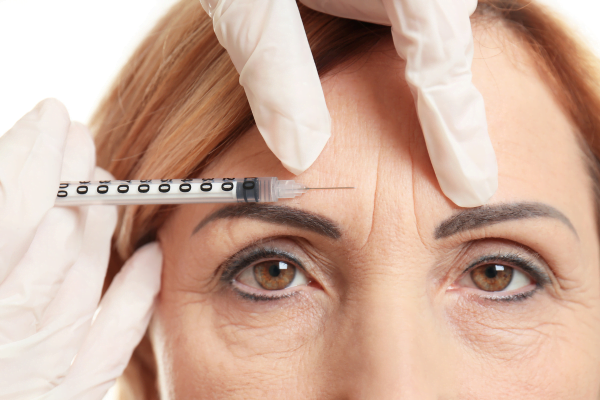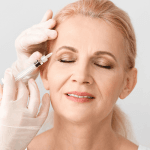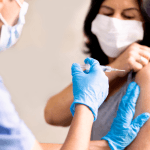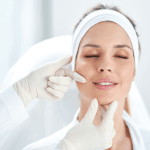In the past few years, there has been a substantial increase in the use of injectable treatments within the medical field, with a particular focus on Botox. As we enter 2024, it is crucial for healthcare professionals to be aware of new developments and figures relating to emerging trends in the use of Botox treatments.
Surge in Botox Usage Among Doctors
Botox, which is produced from the bacterium Clostridium botulinum, has been a staple in the world of cosmetic procedures for many years. Its ability to temporarily restrict muscle movement has earned it a spot as a top choice for lessening the look of wrinkles and fine lines. According to a recent study, the global market for botulinum toxin is due to reach record highs, with a predicted compound annual growth rate (CAGR) of over 9.8% from 2024 to 2030.
How Frequently is Botox Used by People?
The rate of Botox treatments differs for each of your patients, depending on things like desired outcomes and budget. For healthcare providers, it’s important to understand that patients usually go for repeat injections every three to six months to sustain the results of the treatment.
The Switch to Proactive Botox
Historically, doctors have mostly provided Botox to patients who were looking to combat existing signs of aging. However, one notable trend in 2024 is the increasing demand for proactive Botox among younger demographics.
It’s evident that Millennials and Gen Z individuals are now deciding to have Botox treatments at a younger age as a preventative measure to delay the start of wrinkles. This shift emphasizes an increased awareness within the medical community of the benefits of starting Botox treatments early to maintain youthful skin.
Average Age of Botox Patients
While some patients might consider Botox as a way to prevent wrinkles, it’s vital for doctors to remember that the decision to begin Botox treatments isn’t linked to a specific age. However, it is typically observed that individuals start desiring Botox injections in their late twenties to early thirties, with the average age for treatment being in the mid-thirties to early forties age group.
Non-Invasive Procedures on the Rise
More people in 2024 are opting for non-invasive treatments like Botox instead of invasive surgery, thanks to their low-risk nature and short recovery times. This trend is predicted to continue in 2024, with more people choosing non-invasive methods to meet their cosmetic needs.
How Many Units of Botox for the Forehead?
Deciding on the correct number of Botox units for the forehead is largely dependent on individual factors such as muscle strength, the anticipated results, and the skill level of the administering practitioner. On average, a standard treatment for forehead wrinkles may need between 10 to 30 units of Botox.
How Long Does Botox Last?
Botox isn’t a permanent fix for wrinkles. Typically, its effects last for three to six months. Factors that influence how long it lasts include the patient’s metabolism, muscle strength, and individual response to the treatment.
What is the Cost of Botox?
Botox treatments can have a wide-range of prices, dependent on factors such as location, the competence of the providing physician, and the number of units needed. A single Botox treatment session can cost anywhere from $200 to $800 on average, which is why it’s important for doctors to consider these factors when pricing their services.
What to Avoid After Botox
After getting Botox injections, healthcare professionals have a crucial role in guiding patients on post-treatment care for maximum effectiveness. Doctors should advise patients to avoid certain actions such as rubbing or massaging the treated area, participating in strenuous physical activity, drinking alcohol, or lying down for an extended period directly after the procedure. This advice is vital for ensuring the desired results of the treatment.
Botox for Men
According to the American Society of Plastic Surgeons, men in the US received about 265,000 Botox injections in 2020. This is a 182% increase from 2000, and men now account for 6% of all Botox injections in the country. Doctors need to bear in mind these statistics as they cater to the shifting preferences and demographics of their patients.
Regional Differences
It’s crucial for doctors to take into account the various trends affecting the Botox treatment atmosphere, particularly when it comes to geographical variations and cultural impacts. While North America remains the main market for Botox procedures, the Asia-Pacific region is experiencing notable growth in demand.
Factors such as rising disposable incomes, an expanding aging population, and cultural standards prioritizing beauty and youth contribute to the growing popularity of Botox in these regions. A grasp of these dynamics is essential for doctors to effectively navigate and maximize emerging opportunities in their specific markets.
Necessity of Trained Professionals
As the demand for Botox continues to rise, it remains paramount for healthcare providers to prioritize the safety and effectiveness of treatments. Physicians must stress the importance of engaging with certified and experienced practitioners who strictly adhere to established medical protocols.
Careful attention to proper administration practices and dosage is vital for achieving results that are both aesthetically satisfying and help decrease the chances of adverse effects on patients.
Key Learnings
As we move into 2024, the world of cosmetic enhancement is ever-changing, with Botox being a leading player among non-invasive interventions. The evolving trends, such as preventative measures and the growing number of male patients, highlights a change in attitudes towards beauty standards and aging. However, it’s crucial that doctors approach Botox treatments responsibly and choose reputable professionals to maintain standards of safety and efficacy, ensuring the best possible results for their patients.
Commonly Asked Questions (FAQs)
1. How long does Botox last?
The effects of Botox usually last between three to six months. Nonetheless, individual results might differ due to factors such as metabolism, muscle strength, and the dosage given.
2. How much does Botox cost?
The cost of Botox can range depending on factors like geographical location, the provider’s expertise, and the number of units necessary. Typically, a single Botox treatment session could cost between $200 and $800.
3. How many Botox injections are given each year?
Every year, millions of Botox injections are given around the world, showcasing the procedure’s widespread popularity for addressing several cosmetic concerns.
4. How Many Units of Botox for Forehead?
Determining the appropriate amount of Botox units for the forehead is largely dependent on individual factors such as muscle strength, the desired results, and the expertise of the administering practitioner. On average, a regular treatment for forehead wrinkles could require between 10 to 30 units of Botox.
5. Is Botox completely safe?
While Botox is considered safe when administered by a trained medical professional, like any medical procedure, it does have potential risks and side effects. Common side effects include temporary bruising, swelling, or headaches at the injection site. Serious complications are rare but can occur if Botox is spread outside of the injection site. It’s important to discuss potential risks and benefits with a healthcare provider before beginning treatment.






